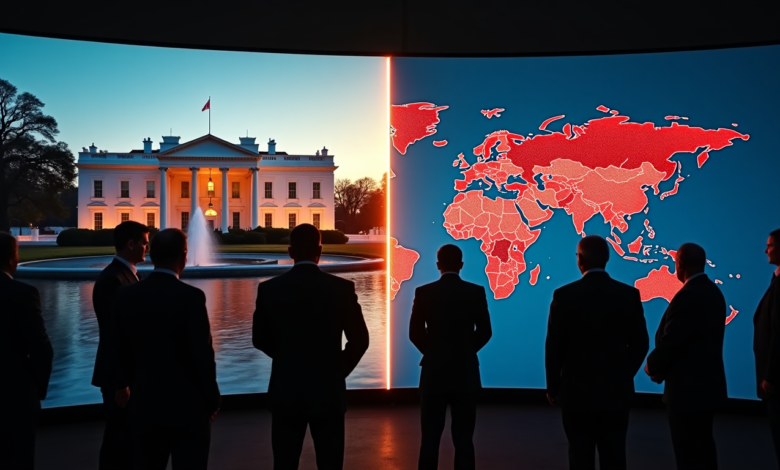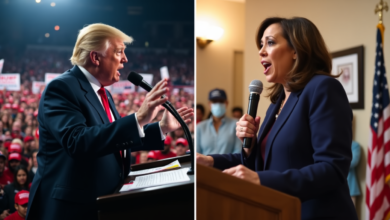
What Trump’s Win Means for U.S. Foreign Policy: Expert Insights
A Trump White House comeback would radically alter U.S. foreign policy and transform global diplomatic ties. His victory would affect U.S. foreign policy beyond regular diplomatic channels. The impact would reshape international alliances, trade deals, and military commitments. This marks a clear return to Trump’s America First approach.
The predicted policy changes touch several key areas of international relations. Trump plans to revise NATO commitments and take a fresh look at the Israel-Palestine conflict. He also wants a tougher stance on China regarding trade. His pledge to end the Russia-Ukraine conflict quickly suggests a dramatic shift from current U.S. strategies. These moves would affect military partnerships and trade agreements worldwide.
America First: Reshaping Global Alliances
The life-blood of Trump’s predicted foreign policy focuses on restructuring America’s international alliances and commitments. His approach signals a fundamental move in America’s way of involving global partners and international organizations.
Potential NATO restructuring
Trump envisions major changes to NATO’s structure and funding mechanisms. European allies would just need to increase their defense spending beyond the current 2% GDP target. A new 3% threshold could emerge. The proposed restructuring would create a controversial two-tier system to separate members based on their defense contributions. NATO’s traditional collective defense principle would change by a lot, though the alliance’s basic framework would remain intact.
Reevaluating International Commitments
The current administration shows growing skepticism about multilateral arrangements. This new approach brings significant policy shifts. The administration has launched a comprehensive review of all unratified treaties and agreements. They have also suspended foreign aid payments until further evaluation. A detailed analysis of resources allocated to international organizations remains underway.
Emphasis on bilateral agreements
Trump’s foreign policy framework favors direct country-to-country negotiations instead of multilateral arrangements. American interests take precedence in these transactional relationships. The administration believes bilateral agreements work better as tools that leverage U.S. economic and diplomatic power, and they allow more direct negotiation of terms favorable to American interests.
The proposed changes mark a most important departure from traditional U.S. diplomatic approaches and highlight American autonomy in international affairs. This restructuring would change how the United States involves itself with allies and partners, while putting direct national interests ahead of collective international frameworks.
Middle East Policy Shift
Trump’s predicted return to power will bring major changes to Middle East policy. These changes will revolutionize regional diplomatic relationships. The new approach covers three key areas: the Israeli-Palestinian conflict, Iran policy, and regional normalization efforts.
Israel-Palestine conflict approach
Trump plans to revive his previous administration’s strategies for the Israeli-Palestinian conflict. His administration would pursue what Trump calls the “ultimate deal,” with Jared Kushner likely leading the effort. The strategic framework includes restrictions on settlement activities in disputed territories. Palestinian areas would receive economic development support. Arab states in the region would participate actively in the negotiation process.
Iran nuclear deal and sanctions
Trump’s Iran policy marks a decisive break from ongoing diplomatic efforts. His administration plans to bring back maximum pressure sanctions with possible additional restrictions. The policy targets Iran’s key economic sectors – energy, petrochemical, and financial industries. Trump has always opposed the Joint Comprehensive Plan of Action (JCPOA) and withdrew from it in 2018.
Potential expansion of Abraham Accords
The Abraham Accords stand as Trump’s major achievement during his first term. His administration plans to give these agreements fresh attention and expand them further. The key priorities would include:
- Deepening existing partnerships with UAE, Bahrain, and Morocco
- Working toward a possible deal with Saudi Arabia
- Using common concerns about Iran in the region
- Supporting business and trade between Israel and Arab nations
Trump’s Middle East strategy shows his preference for one-on-one deals and practical diplomacy. He believes in direct talks and economic benefits rather than traditional multi-country frameworks. This represents a radical alteration in how the U.S. works with the region.
China and Trade Relations
Trump’s projected foreign policy agenda places China trade relations at its core. His proposed measures could reshape the global economic landscape. The administration plans to strengthen its previous trade stance, which could have most important economic implications for both countries.
Escalation of tariffs and trade war
Trump’s campaign promises feature a dramatic 60% tariff on Chinese imports, which represents a major jump from existing rates. This aggressive trade policy would create significant economic ripples. Chinese economic growth could drop by 2.5 percentage points. American consumers would face a staggering USD 524 billion tax increase annually. The U.S. economy would lose approximately 684,000 full-time equivalent jobs. These measures would significantly alter global supply chains and reshape international trade patterns.
Taiwan and South China Sea policy
The administration’s Taiwan strategy combines security promises with economic factors, especially when you have semiconductor production in the mix. Trump just needs Taiwan to boost its defense spending while keeping a close eye on the island’s semiconductor manufacturing dominance. The policy framework for South China Sea promotes freedom of navigation operations. It also challenges China’s territorial claims as part of a wider plan to counter Beijing’s growing power in the region.
Technology and intellectual property disputes
Intellectual property theft causes staggering annual losses ranging from USD 225 billion to USD 600 billion. The administration’s technology policy addresses these challenges effectively.
The strategy aims to tighten export controls on advanced technologies, especially when you have semiconductor manufacturing concerns. These measures stem from growing worries about China’s ability to access critical technologies that could have military applications. American markets and technology remain restricted for Chinese technology firms because of the administration’s position on technology transfer requirements and intellectual property protection.
Russia and Ukraine Conflict Resolution
The most important policy shifts await the U.S. stance on the Russia-Ukraine conflict. Trump plans to implement a radically different approach to end the ongoing war. His strategy stands in sharp contrast to the current diplomatic initiatives.
Trump’s promise to end the war quickly
Trump keeps saying he could end the Russia-Ukraine conflict within 24 hours after taking office. He hasn’t revealed his strategy publicly. However, private conversations reveal his plan would have Ukraine give up territory to Russia, particularly Crimea and the Donbas border region. His running mate has described a possible solution that creates a demilitarized zone along existing battle lines. This approach would let Ukraine keep its sovereignty while giving Russia assurances about Ukraine’s neutral status regarding NATO membership.
What changes mean for U.S. aid to Ukraine
These important changes to U.S. support for Ukraine include:
- Current aid packages would become loans that require repayment
- Support would depend on Ukraine being willing to negotiate
- Military funding would decrease substantially
- New approval process would review existing aid commitments
Diplomatic approach with Putin
Trump’s diplomatic strategy with Putin focuses on direct negotiations between the core team. He wants to speak with Russian and Ukrainian leaders to aid peace talks. The former president believes lifting sanctions against Russia could help create a broader peace deal. Both sides “want to save face” and look for a way out of the conflict.
Ukraine might need to make major compromises in the proposed peace framework, including giving up some territory. Ukrainian President Zelenskyy tried to connect with Trump’s “peace through strength” approach and stressed America’s leadership role in global affairs. Critics say this strategy could verify Russia’s territorial gains since 2014, which now covers about 20% of Ukrainian territory.
Moscow noticed Trump’s stance on the conflict. Kremlin spokesman Dmitry Peskov showed doubt about quick resolution claims and called such thoughts “the realm of fantasy.” This proposed approach would create a radical alteration from current U.S. policy that could change the power balance in Eastern Europe and reshape America’s relationships with Ukraine and Russia.
Trump’s predicted return to the White House will bring sweeping changes to U.S. foreign policy. His America First approach aims to reshape diplomatic ties through one-on-one agreements. He plans to restructure long-standing alliances like NATO and change economic ties, especially when you have China in the picture. These moves mark a clear departure from traditional U.S. diplomatic methods. Direct negotiations and deal-based relationships would replace the usual multi-country frameworks.
These changes could send shockwaves through the international system. They would affect how countries trade, handle security, and resolve conflicts. Trump’s ideas about the Russia-Ukraine conflict, along with his position on China and Middle East policy, point to a new direction in U.S. priorities. America’s role in world affairs would focus more on national interests than international commitments. This approach could reshape global politics for years to come.





